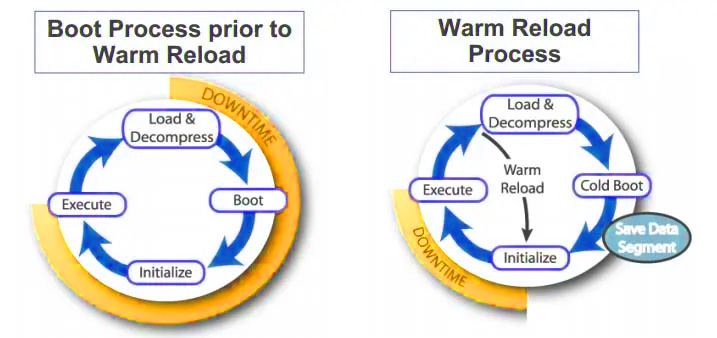Warm boot, also known as a soft boot or warm start, refers to the process of restarting a computer system without the need to interrupt power to the system. This is in contrast to a cold boot, where the system is restarted from a completely powered-off state. A warm boot can be initiated through software, often by pressing a combination of keys or selecting an option within the operating system.
The History of the Origin of Warm Boot and the First Mention of It
The concept of warm booting originated with early computer systems in the 1970s. During this era, computers were still primarily used in business and scientific contexts, and the ability to restart the system without powering it down completely became a desired feature. The term itself likely originated in the context of hardware, where “boot” is short for “bootstrap,” a metaphor for pulling oneself up by one’s bootstraps. The warm boot was designed to be a quicker and more efficient way to restart the system than a complete power down and power up.
Detailed Information About Warm Boot: Expanding the Topic Warm Boot
Warm booting allows the computer’s operating system to reload without having to go through the entire BIOS (Basic Input/Output System) initialization sequence. This can save time, especially on older systems where hardware initialization can be slow.
Benefits
- Faster Restart: Bypassing the BIOS can significantly reduce the time needed to restart the system.
- Resource Preservation: Certain system settings and resources may be preserved, making for a smoother transition after the restart.
Disadvantages
- Incomplete Reset: Some hardware or software issues may not be resolved by a warm boot, requiring a full cold boot to fully reset the system.
The Internal Structure of the Warm Boot: How the Warm Boot Works
The warm boot process typically works as follows:
- User Initiation: The user triggers the warm boot, usually through a key command (e.g., Ctrl+Alt+Del) or a software option.
- Closing Programs: The operating system closes all running programs and releases system resources.
- OS Reloading: The operating system is reloaded without the need to reinitialize hardware, unlike in a cold boot.
- Restart Completion: The system returns to the login screen or desktop, and the user can continue working.

Analysis of the Key Features of Warm Boot
- Speed: Faster than a cold boot.
- Convenience: Easily initiated through user commands.
- Partial Reset: May not resolve all hardware or software issues.
Types of Warm Boot
The warm boot process can vary slightly depending on the system’s hardware and operating system.
| Operating System | Key Command | Notes |
|---|---|---|
| Windows | Ctrl+Alt+Del | Option to restart or log off |
| macOS | Ctrl+Cmd+Eject | Or use Apple menu |
| Linux | Varies | Often system-specific |
Ways to Use Warm Boot, Problems, and Their Solutions Related to Use
Usage
- Troubleshooting: Warm boot is often used to resolve minor software issues.
- System Updates: Many updates require a restart but may not require a full cold boot.
- Refreshing System: Quickly refreshing the system without a complete shutdown.
Problems & Solutions
- Incomplete Resolution: If the warm boot doesn’t resolve an issue, a cold boot may be required.
- Data Loss: Ensure all work is saved before initiating a warm boot.
Main Characteristics and Other Comparisons with Similar Terms
- Warm Boot vs Cold Boot:
- Warm Boot: Faster, does not fully reinitialize hardware.
- Cold Boot: Slower, complete hardware reinitialization.
Perspectives and Technologies of the Future Related to Warm Boot
The future may see further optimization of the warm boot process, making restarts even more efficient. Integration with more advanced hardware diagnostics tools could also make warm boots more effective in troubleshooting system issues.
How Proxy Servers Can Be Used or Associated with Warm Boot
Proxy server providers like OneProxy can benefit from warm booting in maintaining server uptime and quickly applying updates or changes without a full system shutdown. This ensures smoother user experience and minimizes service interruptions.
Related Links
This article provides a comprehensive view of warm booting, from its history and functionality to its future prospects and applications in proxy server environments like those provided by OneProxy.




